It quickly became clear early on Friday morning across India that Narendra Modi and his Hindu nationalist Bharatiya Janata Party (the BJP, भारतीय जनता पार्टी) were headed for a historical victory in India’s national elections, which took place across nine separate phases between April 7 and May 12. ![]()
But to really understand the impact of the victory, it’s important to delve into the results on a state-by-state level. Where did the BJP massively exceed expectations? Where did it fall short? Where did regional leaders keep the ‘Modi wave’ at bay? Where did regional leaders fail? Each state tells us something about the future shape of India’s new political reality in New Delhi and about the future of state governance, which, after all, represents the most important level of government for most Indians, even in the Modi era.
For the record, here are the final results:
The BJP, together with its allies in the National Democratic Alliance (NDA) won 336 seats in the Lok Sabha (लोक सभा), the House of the People, the lower house of India’s parliament. It’s the largest mandate that any Indian party/coalition has won since 1984.
The ruling Indian National Congress (Congress, भारतीय राष्ट्रीय कांग्रेस) and its allies in the United Progressive Alliance (UPA) won just 58 seats. Not only did the Congress suffer the worst defeat of its history under the leadership of Rahul Gandhi, the great-grandson of India’s first post-independence prime minister Jawaharlal Nehru, it’s the first time that a non-Congress party has won an absolute majority in the Lok Sabha.
Regional parties and other third groups won an additional 149 seats.
* * * * *
RELATED: India’s election results — Modi wave largest mandate since 1984
* * * * *
For reference, before jumping into the state-by-state analysis, here’s a map of all of India’s states and territories:
* * * * *
Uttar Pradesh
199.6 million people
80 Lok Sabha seats
Hindu: 81%, Muslim: 18%
Language: Hindi
Chief minister: Akhilesh Yadav (Samajwadi Party)
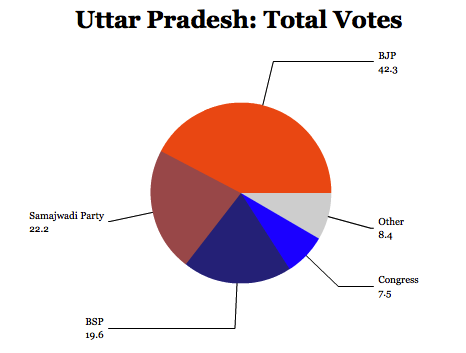
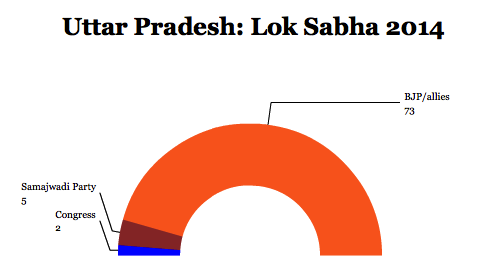
I wrote before voting began that the path to victory nationally ran through Uttar Pradesh, which elects nearly one-third of the seats that a central Indian government needs to form a majority in the Lok Sabha. Moreover, as an state in the north-central ‘Hindi belt’ of India, with political allegiances that are tied in complex ways to caste, religion and class, it’s typically a strong bellwether for much of the rest of the country.
Going into the contest, it looked like a four-way race among the Congress, the BJP, the ruling Samajwadi Party (समाजवादी पार्टी, Socialist Party), which has led the regional government since 2012, and the Bahujan Samaj Party (BSP, बहुजन समाज पार्टी) of former chief minister Mayawati, one of India’s leading dalit politicians.
Here’s the breakdown of the state’s Lok Sabha seats after the 2009 vote:
It’s a staggering 53-seat swing toward the BJP. The only two constituencies that Congress won were Rae Bareli, where party president Sonia Gandhi won reelection, and Amethi, where party vice president Rahul Gandhi, her son, won reelection — though he was originally trailing the BJP candidate in the early vote count.
That the BJP won 71 seats here (with two additional seats going to a minor state party ally) goes a long way in explaining its blowout landslide victory today. Modi’s controversial aide, former Gujarat home minister Amit Shah, organized the campaign here, and it’s a success beyond what even more of the BJP’s leading figures could have imagined. It’s especially surprising given that since 2002, the SP and the BSP have controlled government at the state level, to the detriment of both the BJP and Congress.
When you look at the result here in terms of vote share, it’s a lot less lopsided — the BJP won 88.7% of the seats with just 42.3% of the vote. Remarkably, the BSP, which represents mostly dalit voters, the non-caste voters at the bottom of India’s caste system, won 22.9 million votes nationwide, many of them in Uttar Pradesh, for a total 4.1% of the national vote. Though it’s the second largest share of the vote after the BJP and the Congress nationally, it will have no seats. Accordingly, one of the lessons of the Uttar Pradesh results is seeing just how lopsided a first-past-the-post election system can be. It’s especially troubling to see a party, having won nearly 23 million votes from among one of India’s most vulnerable constituencies, completely shut out of the Lok Sabha — and it’s one reason reformers wish that India would incorporate elements of proportional representation.
* * * * *
Maharashtra
112.4 million people
48 Lok Sabha seats
Hindu: 82%, Muslim: 16%
Language: Marathi
Chief minister: Prithviraj Chavan (Congress)
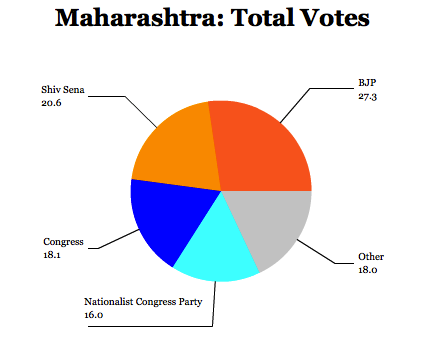
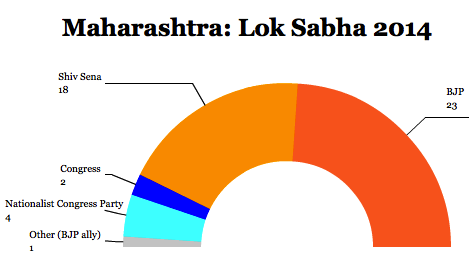 Maharashtra, which is one of India’s most economically important states, is home to Mumbai, the country’s largest city. It’s also home to a particularly unique strain of Marathi, Hindu nationalism.
Maharashtra, which is one of India’s most economically important states, is home to Mumbai, the country’s largest city. It’s also home to a particularly unique strain of Marathi, Hindu nationalism.
Traditionally, Maharashtra’s politics have mirrored national politics, though the BJP largely competes alongside its Marathi nationalist ally, Shiv Sena (शिवसेना). Congress completes largely alongside its ally, the Nationalist Congress Party (NCP, राष्ट्रवादी कॉँग्रस पक्ष), which split from Congress in 1999 over the issue of Sonia Gandhi’s leadership, though it’s now a dependable partner.
The results here are especially ominous for Congress, which lost 15 seats here, and which also faces state elections in Maharashtra later this year. If the Lok Sabha results are any indication, Congress could soon be headed for the opposition benches in Mumbai as well as in New Delhi.
* * * * *
Bihar
103.8 million people
42 Lok Sabha seats
Hindu: 82%, Muslim: 18.5%
Language: Hindi, Urdu
Chief minister: Nitish Kumar (Janata Dal (United)), resigning
Of all the states where national elections are having an impact on state-level politics, it’s in Bihar.
Bihar’s chief minister, Nitish Kumar, left the NDA in June 2013 on the basis of what Kumar believed to be Modi’s unacceptable role in the 2002 communal violence in Gujarat. Critics claimed it had more to do with Kumar’s desire to become prime minister himself one day. Though it isolated Modi and the BJP at the time, it turns out to have been a politically disastrous decision for Kumar and his party, the Janata Dal (United) (JD(U), जनता दल (यूनाइटेड)), which has governed Bihar since 2005. Kumar has amassed an impressive record, presiding over double-digit economic growth in a state that’s been hitherto known for its relatively poverty.
Though the JD(U) controlled 20 seats going into the election, it retained just two. Kumar has said that he will resign as chief minister –there’s a chance he will stay on leading an anti-BJP secular coalition, there’s a chance that another JD(U) official will emerge as chief minister, and there’s a very strong chance that Bihar could have snap elections sooner than the planned 2015 vote. Like Uttar Pradesh, Bihar has a higher-than-average proportion of Muslim voters, and caste politics are important in the state, so there are complex voting relationships on the basis of religion and caste.
Kumar’s traditional state-level rival, former chief minister Lalu Prasad Yadav, who leads the Rashtriya Janata Dal (RJD, राष्ट्रीय जनता दल), made gains, allying with Congress in the state and appealing to the state’s Muslim voters, but it didn’t have enough strength to stop the BJP.
Another Bihar state-level party, the Lok Janshakti Party (LJP), a JD(U) breakaway faction that formed in 2005, aligned with Modi as part of the BJP — an alliance that paid off when it won more seats than the either of the two more established state parties, the JD(U) and the RJD.
* * * * *
West Bengal
91.3 million people
42 Lok Sabha seats
Hindu: 72.5%, Muslim: 25%
Language: Bengali, Nepali
Chief minister: Mamata Banerjee (All India Trinamool Congress)
In West Bengal, chief minister Mamata Banerjee swept the Communist Party of India (Marxist) (CPM, भारत की कम्युनिस्ट पार्टी (मार्क्सवादी)) out of power in 2011 — the Communists had controlled West Bengal’s government for the past 34 years.
A former minister who began her career within Congress and who has supported both Congress-led and BJP-led central governments in the past, Banerjee might have once considered making common cause with Modi. Nonetheless, she increasingly challenged him over the course of the election campaign, calling him a ‘donkey’ and the ‘butcher of Gujarat,’ and clashed with him over the status of migrants from neighboring Bangladesh. Appealing to the state’s massive Muslim population, Banerjee’s approach worked — with the Communists subdued from their state-level loss three years ago and with Congress in decline nationally, Banerjee effectively transformed the national elections into an opportunity to raise her own profile. She’s one of just a handful of regional leaders to have kept the BJP at bay, and she’ll likely emerge as one of the most powerful opposition voices in the Modi era.
With 34 seats, her party, the All India Trinamool Congess (TMC, সর্বভারতীয় তৃণমূল কংগ্রেস) is now the fourth-largest in the entire Lok Sabha.
* * * * *
Andhra Pradesh
84.7 million people
42 Lok Sabha seats
Hindu: 89%, Muslim: 9%
Language: Telugu
Chief minister: President’s rule
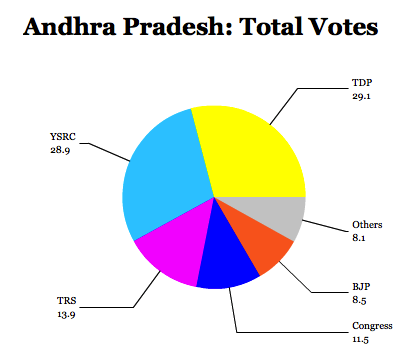
This year’s election marked the last time that the state of Andhra Pradesh will vote as a single state — in June, the region of Telangana will separate into a new state, leaving the rest of Andhra Pradesh as a rump state, often referred to as ‘Seemandhra’ to capture the coastal Andhra and Rayalaseema regions.
As in much of the rest of India, politics in Andhra Pradesh has become a regional contest — both in terms of elections to the Lok Sabha and to the simultaneous state legislative elections in both Telangana and Seemandhra/Andhra Pradesh.
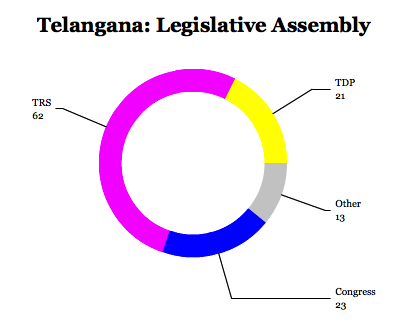
In Telangana, which elected its first-ever state government and 17 members to the Lok Sabha, the Telangana Rashtra Samithi (TRS) reaped the benefits of its 13-year campaign for Telangana’s statehood. Its leader, Kalvakuntla Chandrashekar Rao (known as ‘KCR’), will become the state’s first chief minister, with an absolute majority of seats in the new Telangana legislative assembly, based in the new capital of Hyderabad (both states will share Hyderabad as a capital for the first decade of Telangana’s statehood).
When Congress rushed through Telangana’s statehood bill earlier this year through the Indian parliament, it thought it would stand to gain support from a grateful population — or even an electoral alliance with the TRS. If anything, Telangana’s voters resented that it took Congress so long to act on its hopes for statehood.
 In neighboring Seemandhra, the Telugu Desam Party (TDP, తెలుగు దేశం పార్టీ) had traditionally competed with Congress for control of Andhra Pradesh’s government. But with the formation of the regional Yuvajana Sramika Rythu Congress Party (YSRC, వై యస్ ఆర్ కాంగ్రెస్ పార్టీ, Youth, Labour and Peasant Congress Party) in 2009, Congress was shut out completely from state government in this year’s state elections.
In neighboring Seemandhra, the Telugu Desam Party (TDP, తెలుగు దేశం పార్టీ) had traditionally competed with Congress for control of Andhra Pradesh’s government. But with the formation of the regional Yuvajana Sramika Rythu Congress Party (YSRC, వై యస్ ఆర్ కాంగ్రెస్ పార్టీ, Youth, Labour and Peasant Congress Party) in 2009, Congress was shut out completely from state government in this year’s state elections.
Nara Chandrababu Naidu, formerly chief minister between 1995 and 2004, will return to power with a robust TDP majority.
Though the BJP hasn’t traditionally been much of a force in southern India, it’s not all bad news for Modi — the TDP agreed to join the BJP-led NDA earlier this year, and so the BJP will find itself with one southern ally to add regional diversity to its central government.
* * * * *
Madhya Pradesh
72.6 million people
29 Lok Sabha seats
Hindu: 92%, Muslim: 6%
Language: Hindi
Chief minister: Shivraj Singh Chauhan (BJP)
No one expected Madhya Pradesh to be an incredibly difficult state for Modi and the BJP. It’s one of a handful of states that the BJP already governs, and its chief minister, the soft-spoken, wonkish Shivraj Singh Chauhan won a third term in power in state elections last November.
As in the rest of India, though, no one quite expected Congress to collapse the way that it did — it will be reduced from 12 seats to just two.
* * * * *
Tamil Nadu
72.1 million people
39 Lok Sabha seats
Hindu: 88%, Christian: 6%, Muslim: 5.5%
Language: Tamil
Chief minister: Jayalalithaa (AIADMK)
As in West Bengal, Tamil Nadu’s chief minister Jayalalithaa and her regional party, the All India Anna Dravida Munnetra Kazhagam (AIADMK, the All India Anna Dravidian Progress Federation), withstood the Modi wave — it helps, of course, that the BJP never had much of a foothold in India’s south.
But more astoundingly, she won the most complete victory of any Tamil Nadu party in decades, overwhelming her Dravidian opponents, the DMK (Dravida Munnetra Kazhagam, திராவிட முன்னேற்றக் கழகம், Dravidian Progress Federation), by a double-digit margin, shutting them out completely from winning a single seat to the Lok Sabha.
Jayalalithaa, known widely as ‘Amma,’ (‘mother’ in Tamil) most recently came to power in 2011, and she has essentially swapped the office of chief minister with the DMK’s leader, Karunanidhi, since the 1980s. Though her most recent government has worked to provide clean water and greater food security, she’s also mounted something of a personality cult, branding state-run cafeterias as ‘Amma canteens,’ and putting her face on everything from billboards to bottled water.
With 37 seats, the AIADMK is the third-largest party in the Lok Sabha and it will have, amazingly, just seven fewer seats than Congress. Throughout the campaign, Jayalalithaa hedged her bets between either supporting a Modi government or building her own ‘Third Front’ government. Ironically, though Jayalalithaa more than enough seats to become influential in a normal election year, Modi’s landslide means that he won’t need her support to govern. That doesn’t mean that she might not work with the Modi government on a case-by-case basis — or that she might even work with the TMC and other regional groups to try to supplant Congress as the official opposition in the Lok Sabha.
* * * * *
Rajasthan
68.6 million people
25 Lok Sabha seats
Hindu: 88%, Muslim: 8%, Sikh: 1.5%
Language: Hindi
Chief minister: Vasundhara Raje (BJP)
In the former princely state of Rajasthan, the BJP had a clean sweep, taking all 25 of the state’s Lok Sabha seats, a remarkable jump from the four seats that it won in 2009. As in Madhya Pradesh, there were strong signs from the state’s local elections last December that the BJP would perform well here — it regained control of the state legislative assembly in a landslide victory.
* * * * *
Karnataka
61.1 million people
28 Lok Sabha seats
Hindu: 84%, Muslim: 12%, Christian: 2%
Language: Kannada
Chief minister: Siddaramaiah (Congress)
Karnataka was the first major breakthrough for the BJP in southern India — home to Bangalore and India’s information technology economy, and a ‘winner’ in India’s recent turn toward globalization over the past two decades, it was perhaps a natural fit for the more laissez-faire instincts of the BJP, and it won control of state government here in 2008. Infighting and corruption, however, led Karnataka’s voters to boot the BJP government in May 2013 in favor of Congress, making the state somewhat of a countercyclical outlier.
The BJP still managed to win nearly twice as many seats in Karnataka as Congress. Nevertheless, Congress improved from six seats to nine, and the BJP dropped only from 19 seats to 17.
* * * * *
Gujarat
60.4 million people
26 Lok Sabha seats
Hindu: 89%, Muslim: 9%
Language: Gujarati
Chief minister: Narendra Modi (BJP), resigning
Gujarat took a starring role in India’s national campaign as Modi’s home state. Much of his electoral platform revolved around the ‘Gujarat model‘ of economic performance and good governance that Modi trumpeted throughout the election campaign. It’s also the site of the 2002 Hindu-Muslim riots that so controversially tarnish Modi’s record — critics believe he did too little to stop those riots, which left over 1,000 Muslims dead.
Whatever doubts the rest of India may have had about Modi’s record, Gujarat gave Modi its full support — after 13 years and three consecutive terms in power, Modi managed to win all 26 Lok Sabha seats from his home state. That’s especially remarkable, considering that in 2009, the BJP took 15 seats to Congress’s 11 seats.
Top senior minister and Modi confidante Anandiben Patel is widely tipped to replace Modi as chief minister when Modi takes office as chief minister.
* * * * *
Odisha
41.9 million people
21 Lok Sabha seats
Hindu: 94%, Chrisitian: 2.5%, Muslim: 2%
Languages: Oriya
Chief minister: Naveen Patnaik (BJD)
Odisha chief minister Naveen Patnaik joins West Bengal’s Mamata Banerjee and Tamil Nadu’s Jayalalithaa as one of three regional ‘winners’ in the 2014 elections. His regional party, the Biju Janata Dal (BJD, ବିଜୁ ଜନତା ଦଳ), a former member of the NDA, won 19 of Odisha’s 20 Lok Sabha seats. Even more impressively, Patnaik, the son of a former chief minister, and an official known as one of India’s most honest politicians, won a fourth consecutive term as chief minister in a landslide victory in the state legislative assembly elections simultaneously held alongside Lok Sabha elections — the BJD even made a gain of 12 seats in the Odisha legislative assembly.
Like Jayalalithaa, Patnaik was viewed as a likely ally in the event of a BJP minority government.
* * * * *
Kerala
33.4 million people
20 Lok Sabha seats
Hindu: 56%, Christian: 25.5%, Muslim: 19%
Language: Malayalam
Chief minister: Oommen Chandy (Congress)
Kerala, like West Bengal, is unique within India as a state that’s been hospitable to the Communist Party. Unlike in West Bengal, where Communist rule led to 34 years of increasing ineffective and near-feudal rule, Kerala’s Communists can point to a relatively strong record over the decades that’s left the state with some of the top social indicators in the entire country, including a high literacy rate and better health outcomes than states with even higher per-capita income, including Modi’s Gujarat.
Accordingly, the BJP has never had much of a foothold here, either, and politics is generally a contest between a Congress-led coalition, the United Democratic Front (UDF), and the Communist-led Left Democratic Front (LDF).
Though the Communists gained seats at Congress’s expense, it’s one of the few bright spots for Congress, which, together with its allies, won the largest share of Kerala’s seats to the Lok Sabha. It’s the most populous state where Congress managed to hold on to a majority of seats, in fact.
The results are generally good news for Kerala’s chief minister, Oommen Chandy, who argued that the election would be a referendum on his three-year government, which has been tarnished by accusations of corruption against some of Chandy’s closest aides. To the extent that the Gandhi family has been subdued by Congress’s poor national performance, Chandy, at age 70, could assume a more high-profile role as Congress attempts to navigate the political wilderness.
* * * * *
Jharkhand
33.0 million people
14 Lok Sabha seats
Hindu: 68.5%, Islam: 14%, Sarnaism: 13%, Christian: 4%
Language: Hindi
Chief minister: Hemant Sorem (JMM)
Jharkhand is still a relatively new state, formed in 2000 from what was then southern Bihar state.
Going into the election, the BJP already held eight of the state’s Lok Sabha seats, though it managed to improve to 12.
The Jharkhand Mukti Morcha (झारखंड मुक्ति मोर्चा, Jharkhan Liberation Front), a Congress ally has led the state government since a BJP-led government fell last year, held onto its two Lok Sabha seats, but it fell to fourth place in terms of the statewide party vote, a turn of events that should embolden BJP operatives with elections expected later this year.
* * * * *
Assam
31.2 million people
14 Lok Sabha seats
Hindu: 65%, Islam: 31%, Christian: 3.5%
Language: Assamese, Bengali, Bodo
Chief minister: Taran Gogoi (Congress), resigning
Assam was supposed to be one of the bright spots for Congress heading into the election — as in southern India, the BJP has little influence in northeastern India, especially in a state with such a strong Muslim population.
But the voting was marred by violence, and Congress’s support collapsed here, as almost everywhere else.
The All India United Democratic Front (AIUDF), a regional party that won over the votes of many Assamese Muslim voters, managed to win three seats here, including two Muslim MPs. They’ll join the smallest share of Muslim MPs (22) in the Lok Sabha in India’s post-independence history. Though India’s Muslim population is around 13.5% of the total population, Muslims will comprise just 4% of the Lok Sabha for the next five years. That, together with anxieties over Modi’s commitment to religious freedom and religious diversity, could leave India’s 165-million-plus Muslims more isolated than ever.
For Congress, however, the result was so poor that chief minister Taran Gogoi has pledged to resign, taking blame for the defeats.
* * * * *
Punjab
27.7 million people
13 Lok Sabha seats
Sikh: 60%, Hindu: 37%, Muslim: 1.5%, Christian: 1.5%
Language: Punjabi
Chief minister: Parkash Singh Badal (SAD)
Punjab, with its Sikh-majority population, turned out to be one of the most interesting surprises of the election.
Congress managed to hold up fairly well here — though it lost five seats, it still won the largest share of the state-level party vote. In Amritsar constituency, one of the most high-profile races in the country, Amarinder Singh, a former Punjabi chief minister, defeated Arun Jaitley, a leading contender to become either finance minister of external affairs minister in the incoming Modi-led government. Though Jaitley remains a member of the Rajya Sabha, the upper house of the Indian parliament, Amritsar was the most difficult defeat for the BJP nationally and something of a personal setback for Jaitley.
The ruling Badal family had somewhat of a setback, and its Shiromani Akali Dal (SAD, ਸ਼੍ਰੋਮਣੀ ਅਕਾਲੀ ਦਲ), a reliable NDA ally of the BJP and a party devoted to advancing Sikh interests, won just four seats.
Most surprising of all perhaps, the anti-corruption Aam Aadmi Party (AAP, आम आदमी की पार्टी, Common Man Party), which had been expected at one point to sweep Delhi, won its only Lok Sabha seats in Punjab, appealing to former Congress supporters and voter disillusioned with the Badal family. Its haul of four seats gives it something to show for its national efforts in 2014, despite its disappointment in Delhi (more on that below).
* * * * *
Chhattisgarh
25.5 million people
11 Lok Sabha seats
Hindu: 98%, Muslim: 1%
Language: Chhhattisgarhi
Chief minister: Raman Singh (BJP)
Along with Jharkhand, Chhattisgarh was formed as a separate state only in 2000, the eastern region of what was then a much larger Madhya Pradesh.
Like Madhya Pradesh and Rajasthan, Chhattisgarh was one of the states that the BJP successfully defended late last year in November state elections. Unlike in many other states, the BJP already had a strong contingency of MPs here, so it was working to defend its position — it went into the election holding 10 seats, and it retained 10 seats.
* * * * *
Haryana
25.4 million people
10 Lok Sabha seats
Hindu: 88%, Sikh: 6%, Muslim: 6%
Language: Hindi, Urdu, Punjabi
Chief minister: Bhupinder Singh Hooda (Congress)
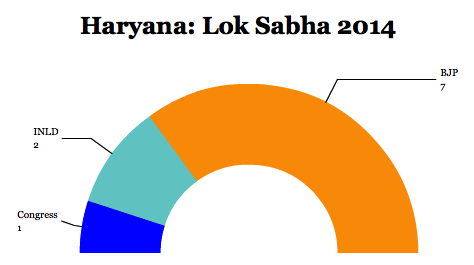
Along with Maharashtra, the state of Haryana, which forms Delhi’s hinterland, will hold state legislative assembly elections later this year. As in Maharashtra, Congress has reason to worry on the basis of its Lok Sabha election results. Going into the vote, it controlled nine out of 10 seats; it held just a single seat.
Not only did the BJP outpoll Congress by a double-digit margin, the Haryana-based Indian National Lok Dal (INLD) pushed Congress into third place.
* * * * *
Delhi (National Capital Territory)
16.8 million people
7 Lok Sabha seats
Hindu: 83%, Muslim: 10%, Sikh: 5%, Jain: 1%
Language: Hindi, Urdu, Punjabi
Chief minister: President’s rule
Though the BJP won the largest share of the vote in the December 2013 legislative assembly elections in the National Capital Territory of Delhi, Arvind Kejriwal and his new anti-corruption party, the AAP, became the bigger story, winning nearly 30% of the vote in its first election. It made Kejriwal, for the better part of December 2013 and January 2014, the hottest political personality in India.
Kejriwal, with the outside support of a decimated Congress faction, led a 49-day government in Delhi, to much fanfare across India, introducing water and power subsidies and introducing measures, like a graft hotline, designed to make government less corrupt. Kejriwal hastily resigned, however, when he failed to pass his Jan Lokpal bill, which would have created a citizen’s ombudsman and provided stronger resources to investigating and punishing corruption in Delhi.
Kejriwal then turned to powering a national campaign for the Lok Sabha, disappointing his local supporters who would have preferred that Kejriwal remain as Delhi’s chief minister, and who worried that the AAP lacked the resources to wage a national campaign. Instead of running for a constituency in Delhi, Kejriwal challenged Modi in Varanasi, in Uttar Pradesh, and Modi defeated him by a nearly 3-to-1 margin.
In Delhi, where the AAP had hopes of winning four or five of the territory’s seven Lok Sabha seats, the BJP instead won all of them. The only consolation for the AAP is that it won nearly 33% of the vote across Delhi, giving it some hope that it will be competitive when Delhi likely holds snap elections later this year.
* * * * *
Jammu and Kashmir
12.5 million people
6 Lok Sabha seats
Muslim: 67%, Hindu: 27%, Sikh: 2%
Language: Urdu
Chief minister: Omar Abdullah (JK National Conference)
Though the state of Jammu and Kashmir has been the cause of many skirmishes with Pakistan over the years, voting here went relatively smoothly in the 2014 elections. The BJP, which hasn’t held any of the state’s Lok Sabha seats for a decade, won three out of six constituencies.
The local opposition party, the Jammu and Kashmir People’s Democratic Party (JKPDP), which is in favor of greater autonomy. had an equally strong performance, winning the other three seats.
Not only is the result a disappointment for Congress, it’s a disappointment for the ruling Jammu & Kashmir National Conference (JKNC), a mildly separatist party.
* * * * *
Arunachal Pradesh
1.38 million people
2 Lok Sabha seats
Hindu: 34.5%, Donyi-Polo: 31%, Christian: 18.5%, Buddhist: 13%, Muslim: 2%
Language: Many Nepali and Tibetan dialects
Chief minister: Nabam Tuki (Congress)
Like Odisha and Andhra Pradesh, voters in the northeastern state of Arunachal Pradesh, bordered by China to its north, Assam to its south and the country of Bhutan to its west, held state assembly elections as well as national elections. Though the BJP and Congress split the state’s two Lok Sabha seats, Congress did much better in the local vote. It’s the one state election that Congress won, handily, and chief minister Nabam Tuki, who first took office in 2011, will be sworn in for another term.
* * * * *
Sikkim
608,000 people
1 Lok Sabha seat
Hindu: 61%, Buddhist: 28%, Christian: 6.5%, Muslim: 1%
Language: Nepali, Sikkimese and Lepcha
Chief minister: Pawan Chamling (Sikkim Democratic Front)
Finally, the last state worth highlighting is Sikkim, which lies just north of West Bengal, south of China, east of Nepal and west of Bhutan.
Politics here has been dominated by the Sikkim Democratic Front (SDF, सिक्किम प्रजातान्त्रिक मोर्चा) since 1994, and it fairly easily won the state’s single Lok Sabha seat. Like Arunachal Pradesh, however, Sikkim held simultaneous state assembly elections.
The SDF’s leader, chief minister Pawan Kumar Chamling, won a record fifth consecutive term as chief minister.
A new party, the Sikkim Krantikari Morcha (SKM, सिक्किम क्रान्तिकारी मोर्चा, Sikkim Revolutionary Front), founded in February 2013 by former minister Prem Singh Tamang (widely throughout Sikkim as P.S. Golay) made significant gains in the state, however, winning 10 seats in the legislative assembly. The SKM’s results might have been even stronger had campaign violence not erupted earlier this spring — the murders of two SDF activists gave Chamling a rallying point to stand against ‘terrorism.’
Photo credit to Sanjay Kanojia / AFP / Getty Images.
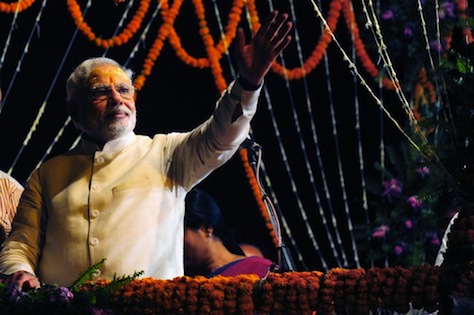
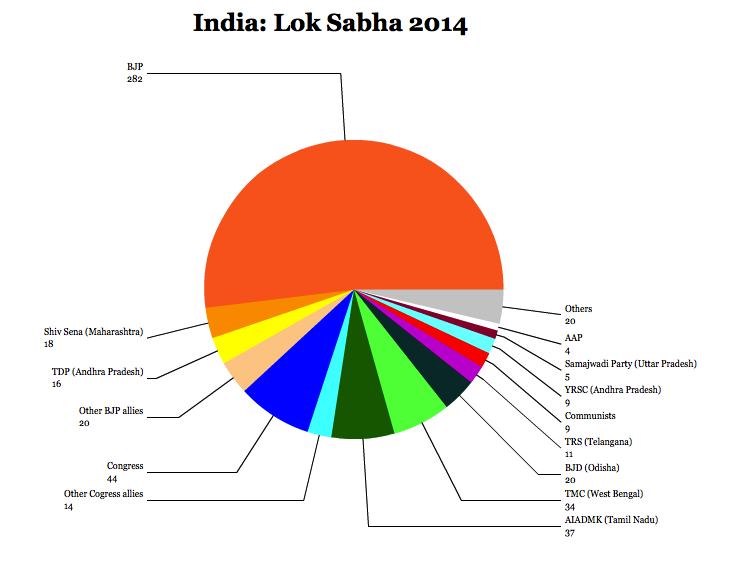
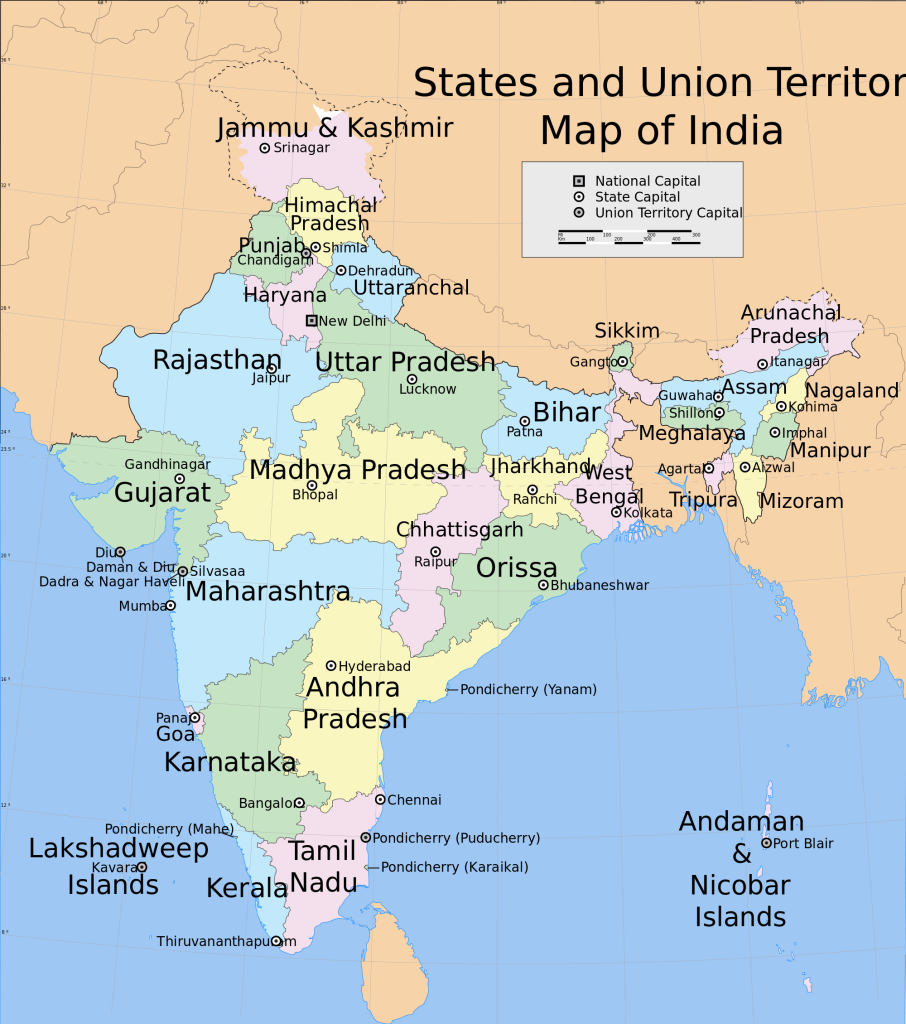

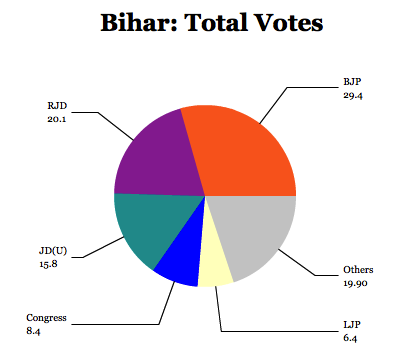
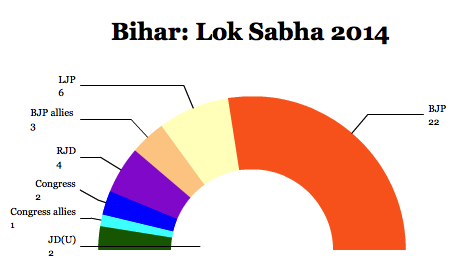
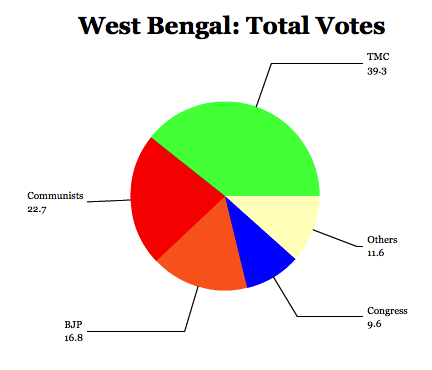
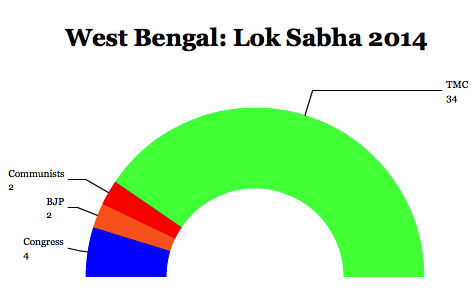
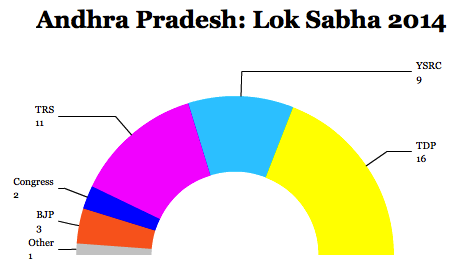
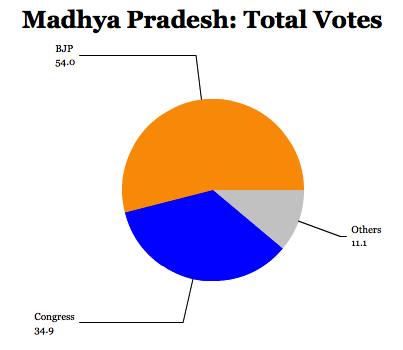
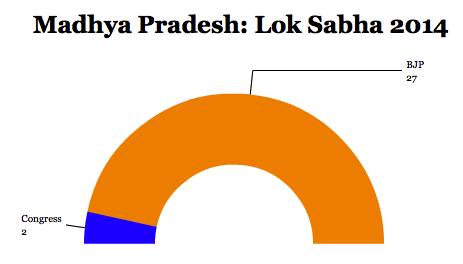


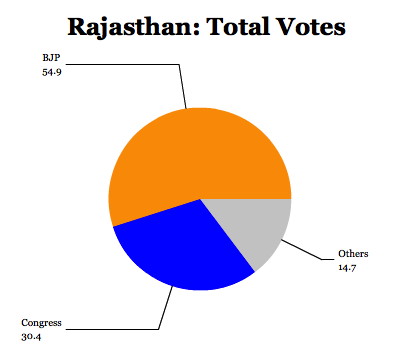
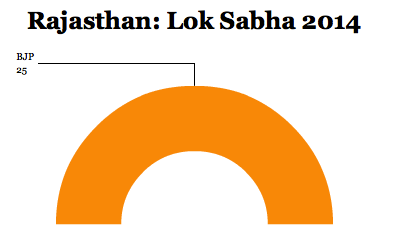

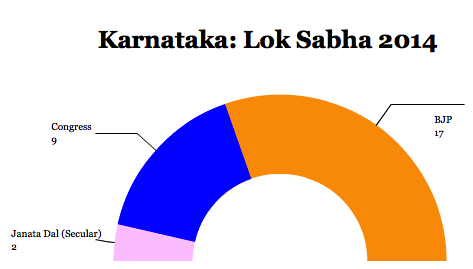
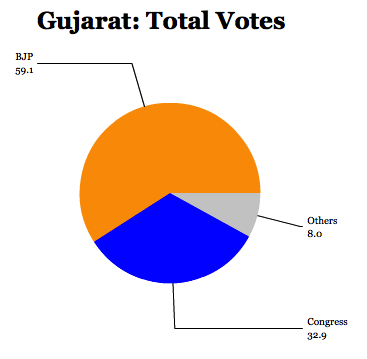
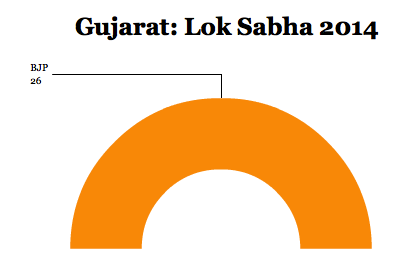
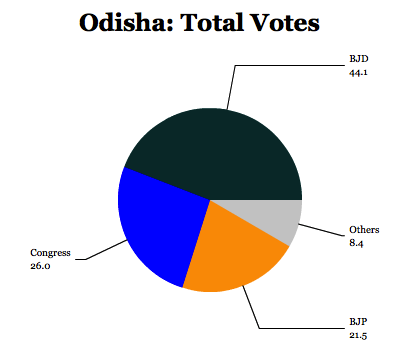
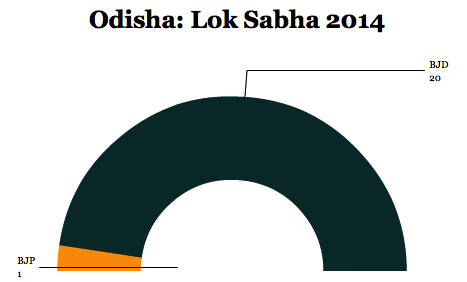
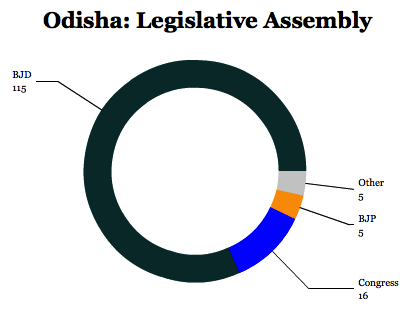
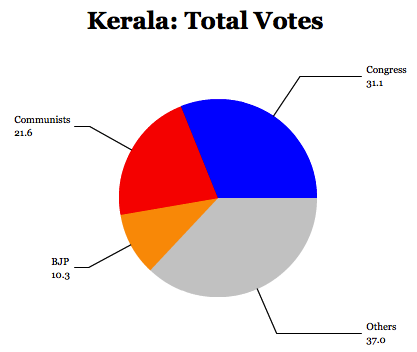
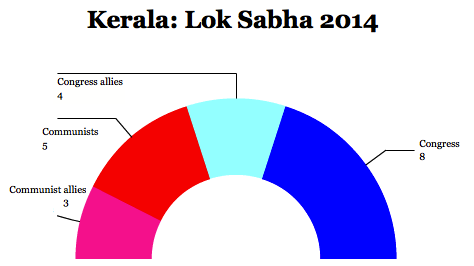
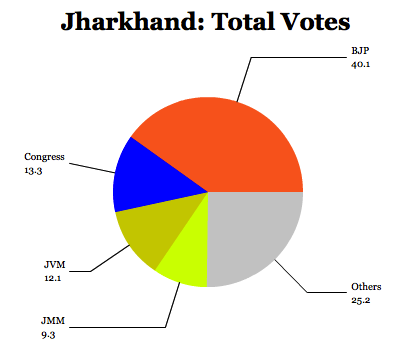

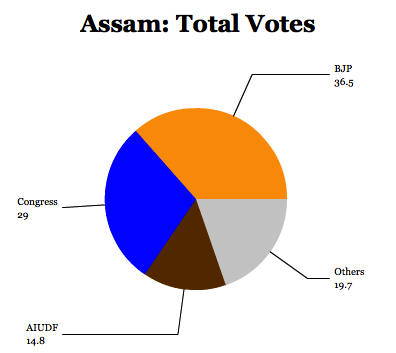
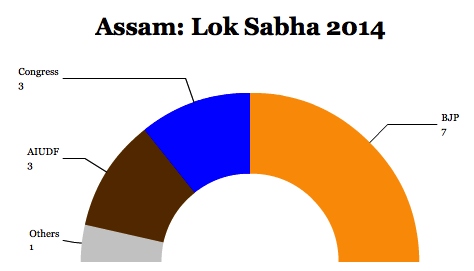
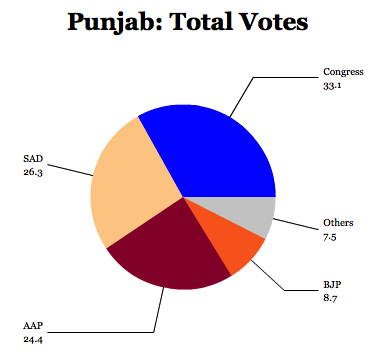
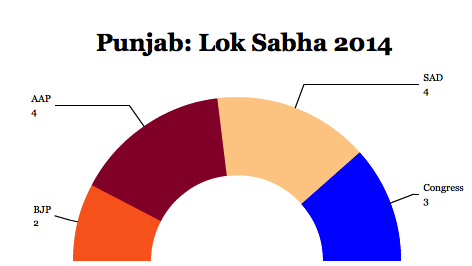


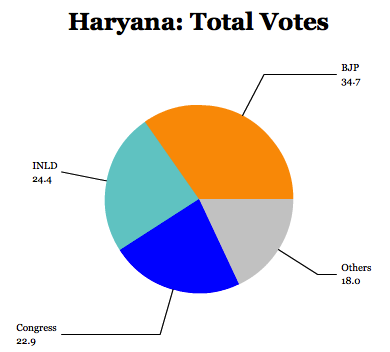
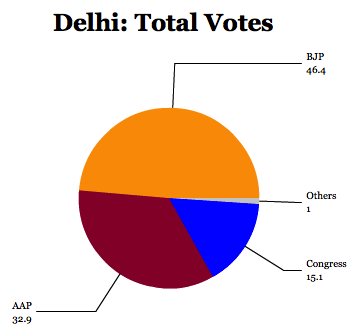
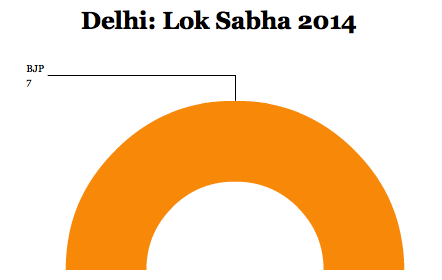
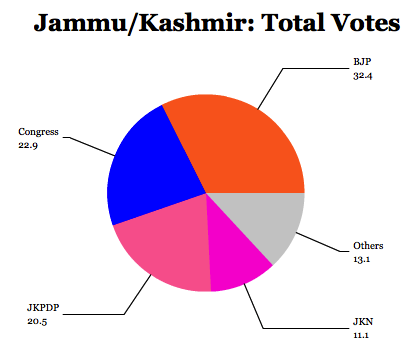
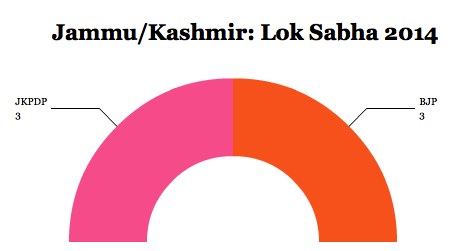
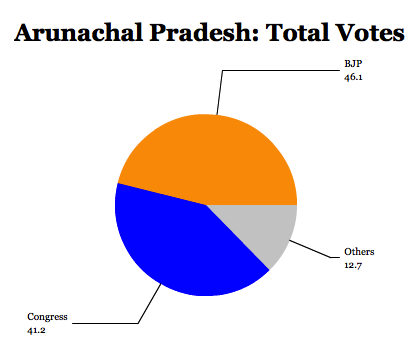
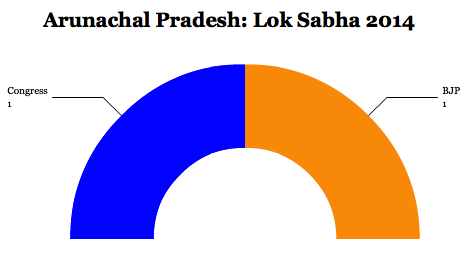
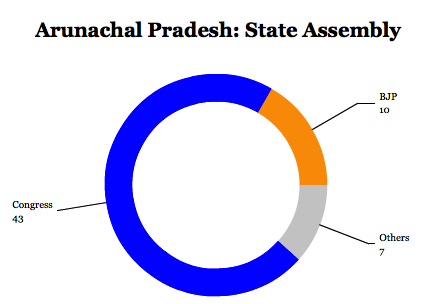
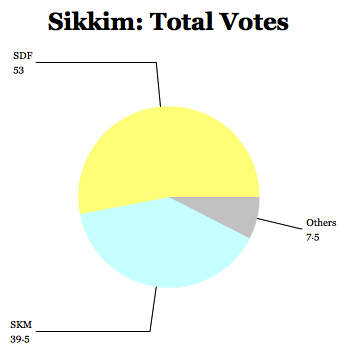
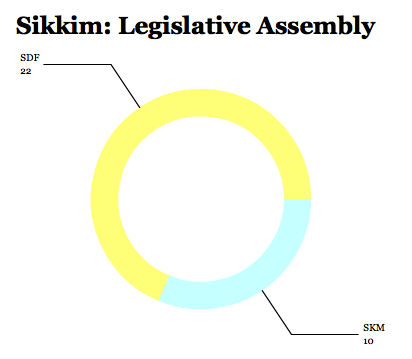
2 thoughts on “A state-by-state overview of India’s election results”